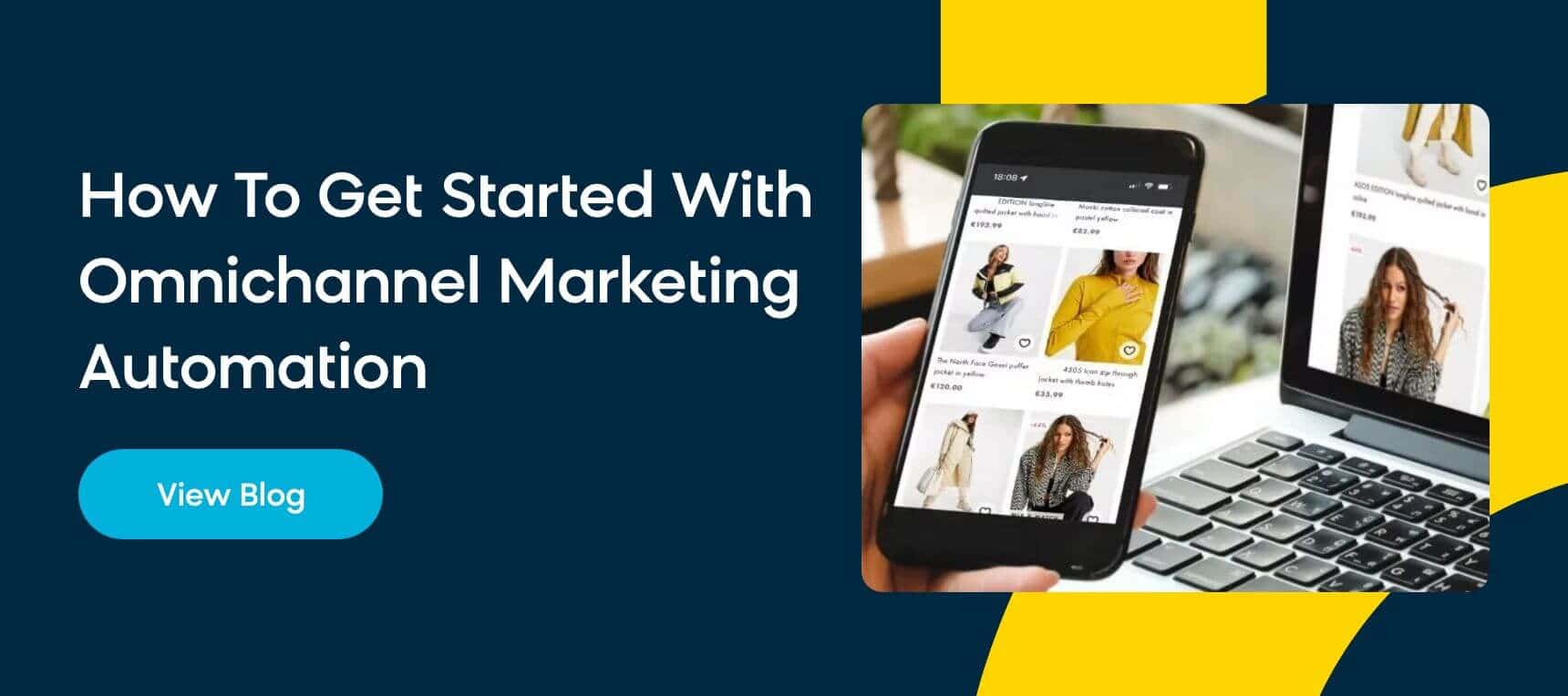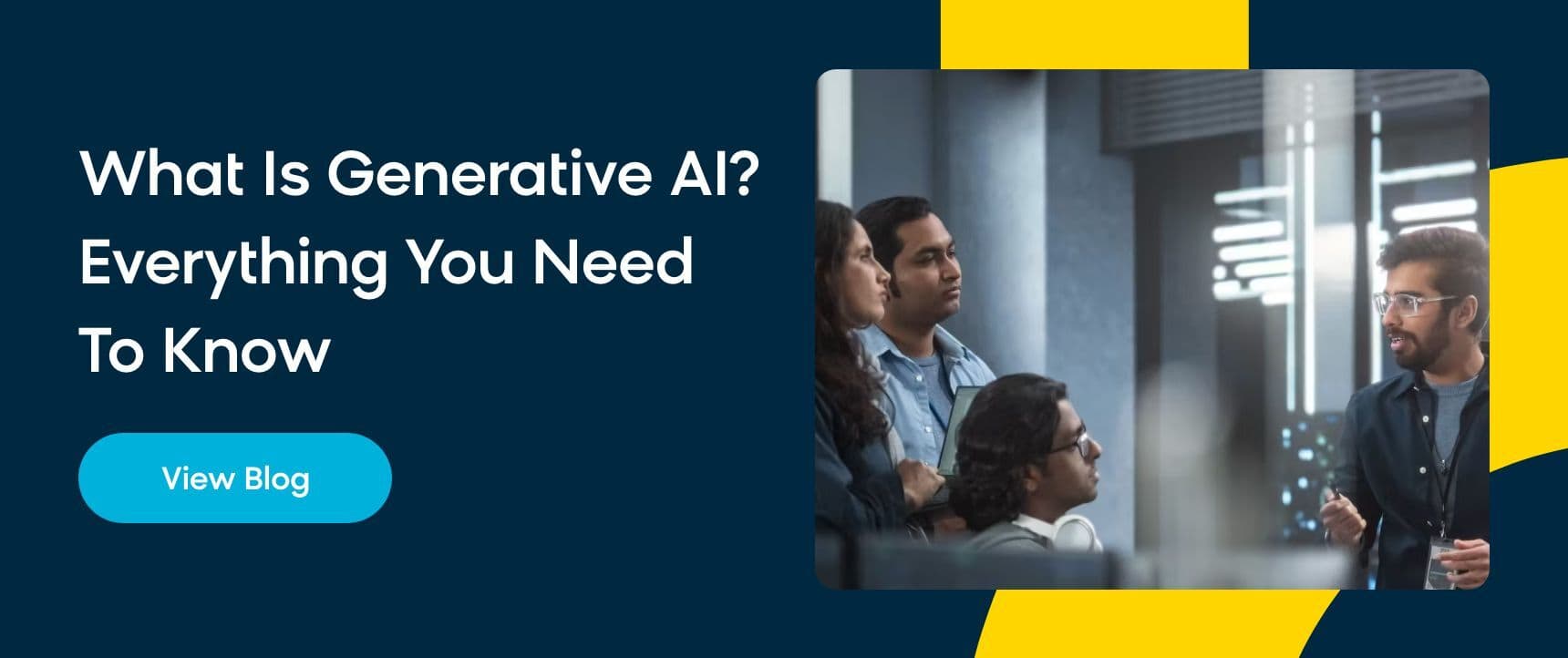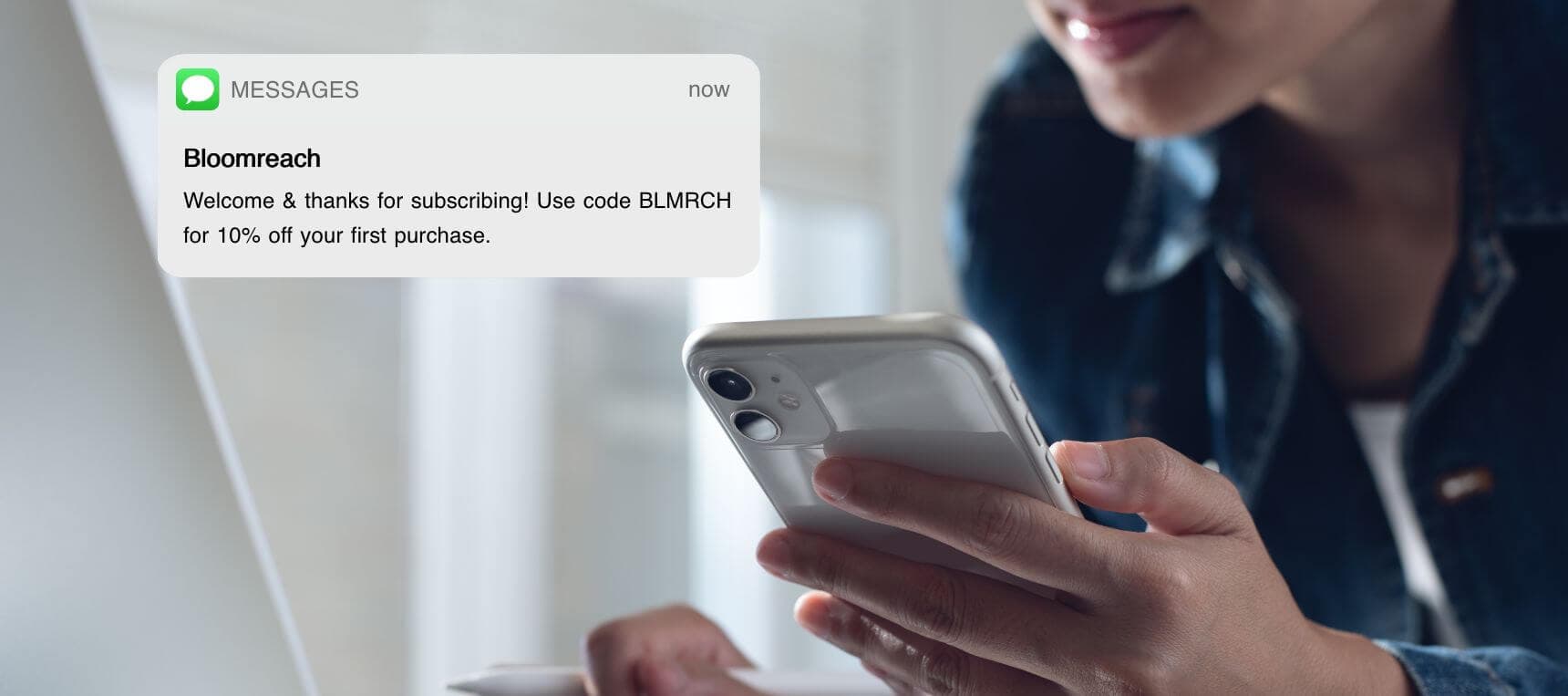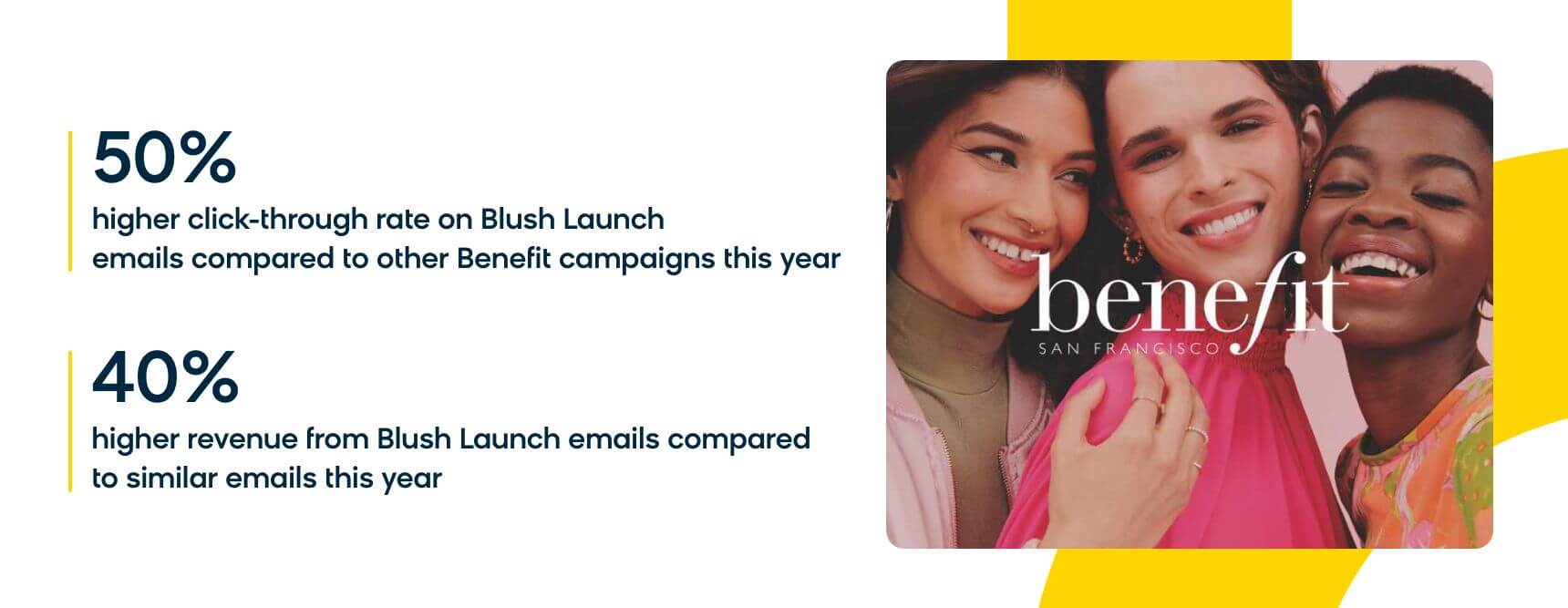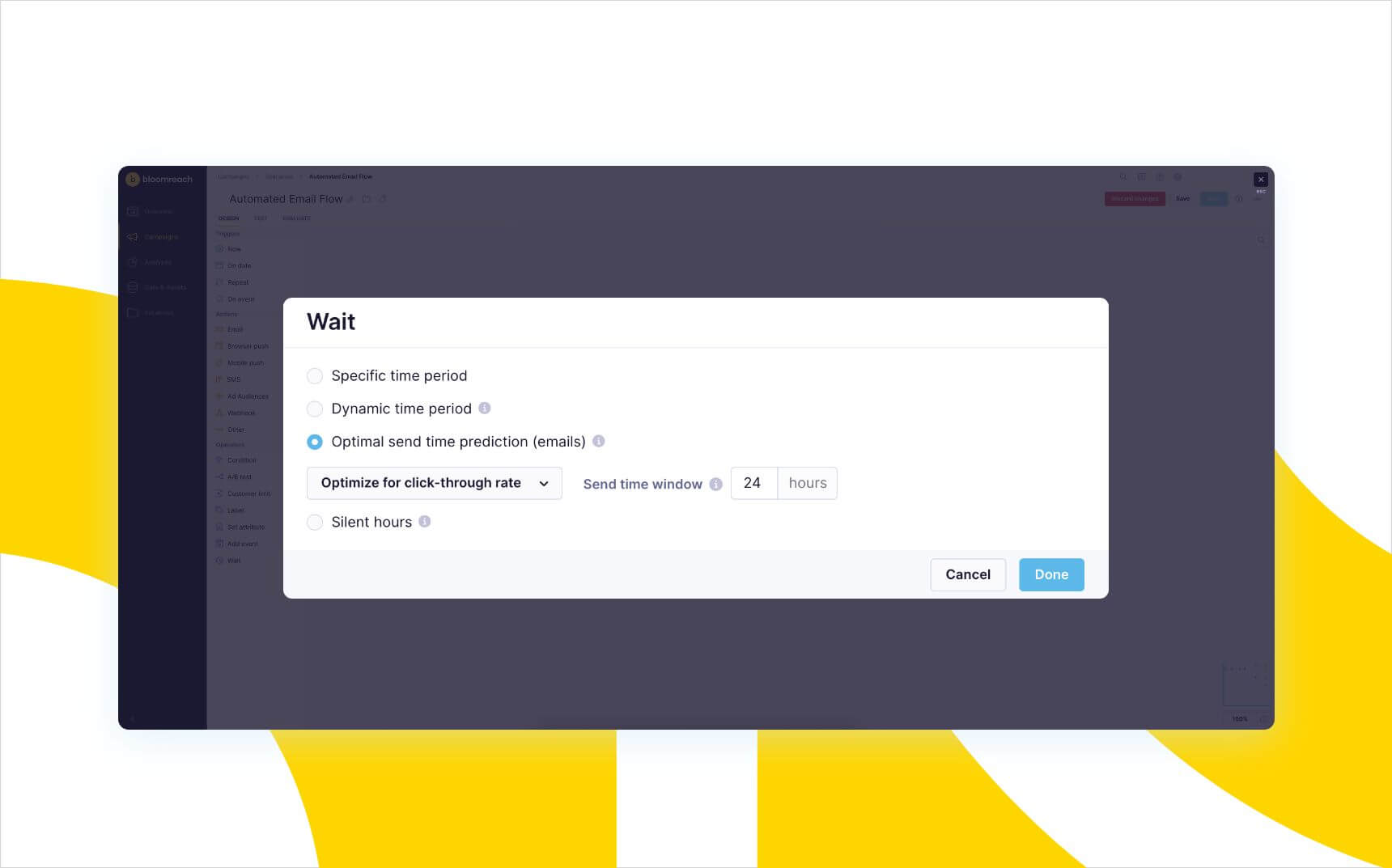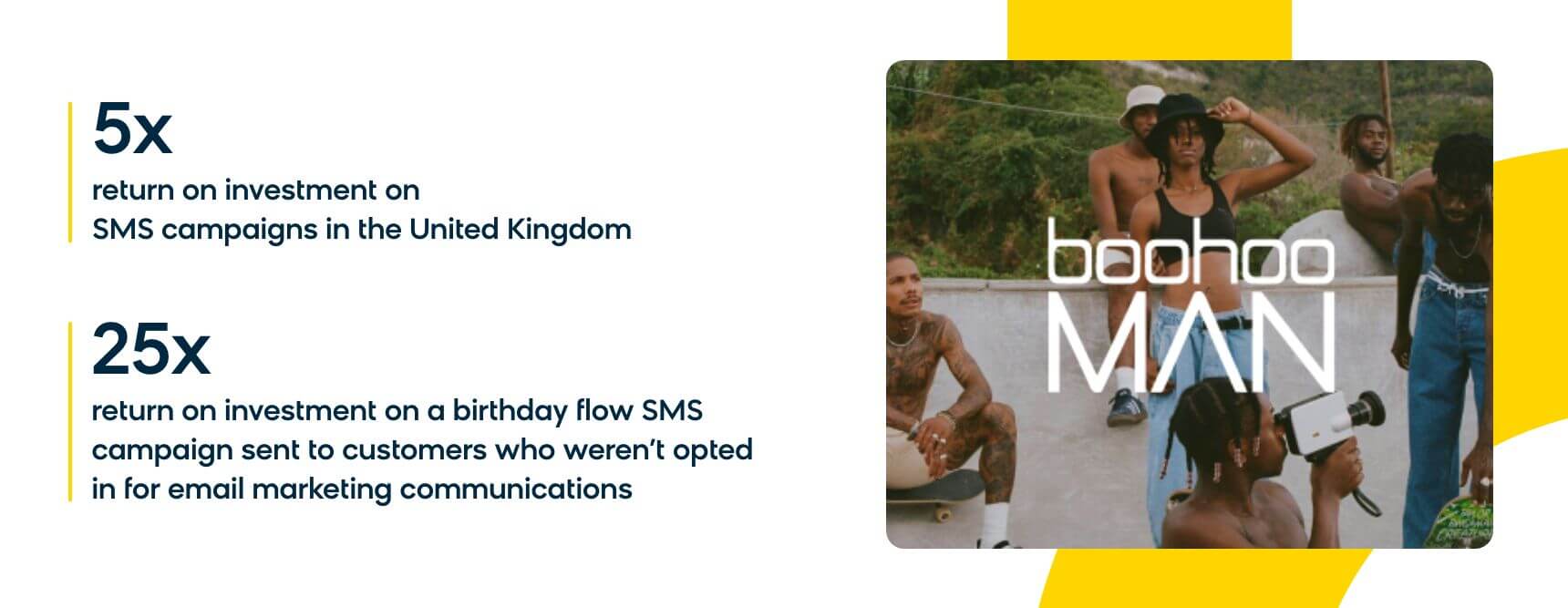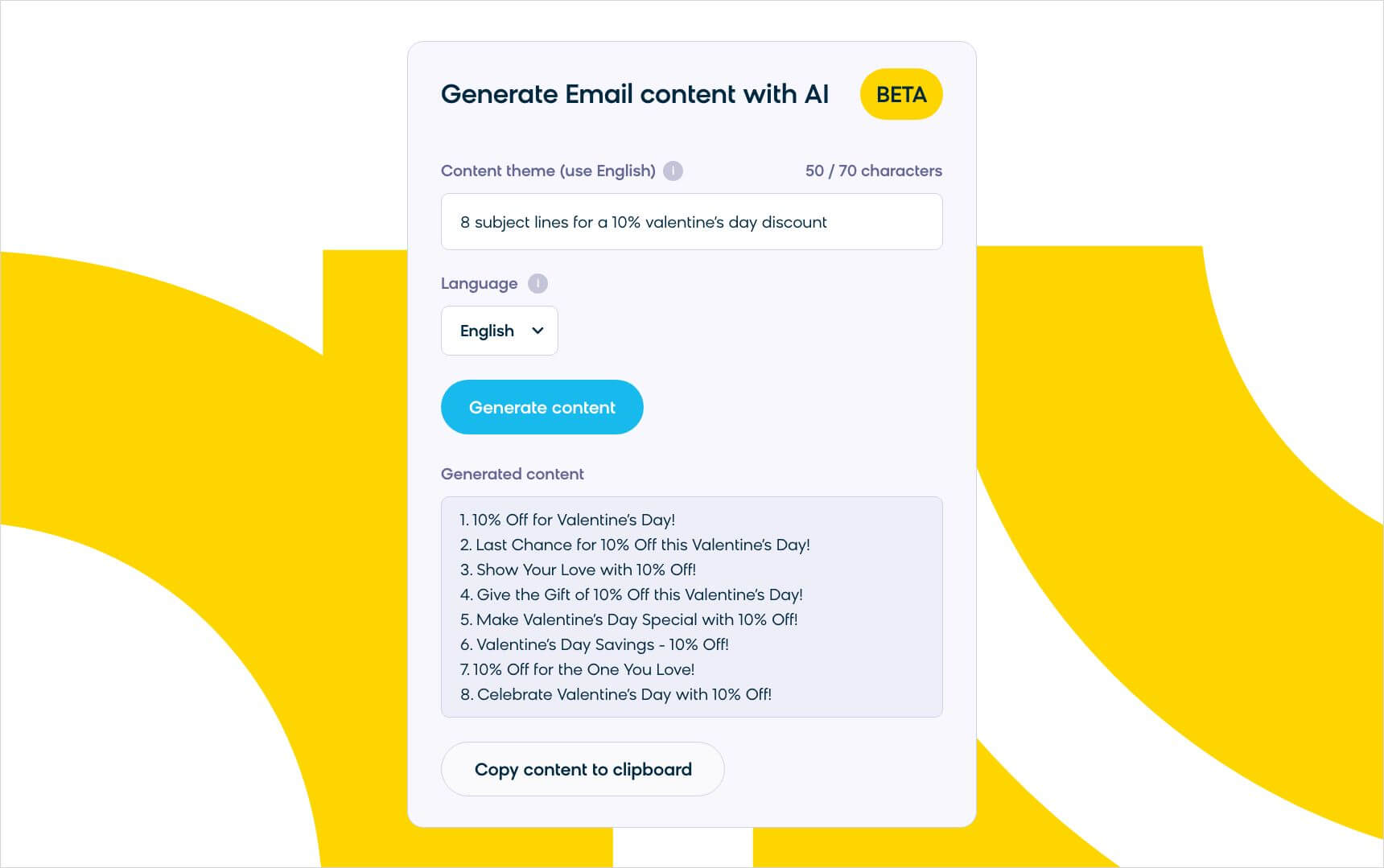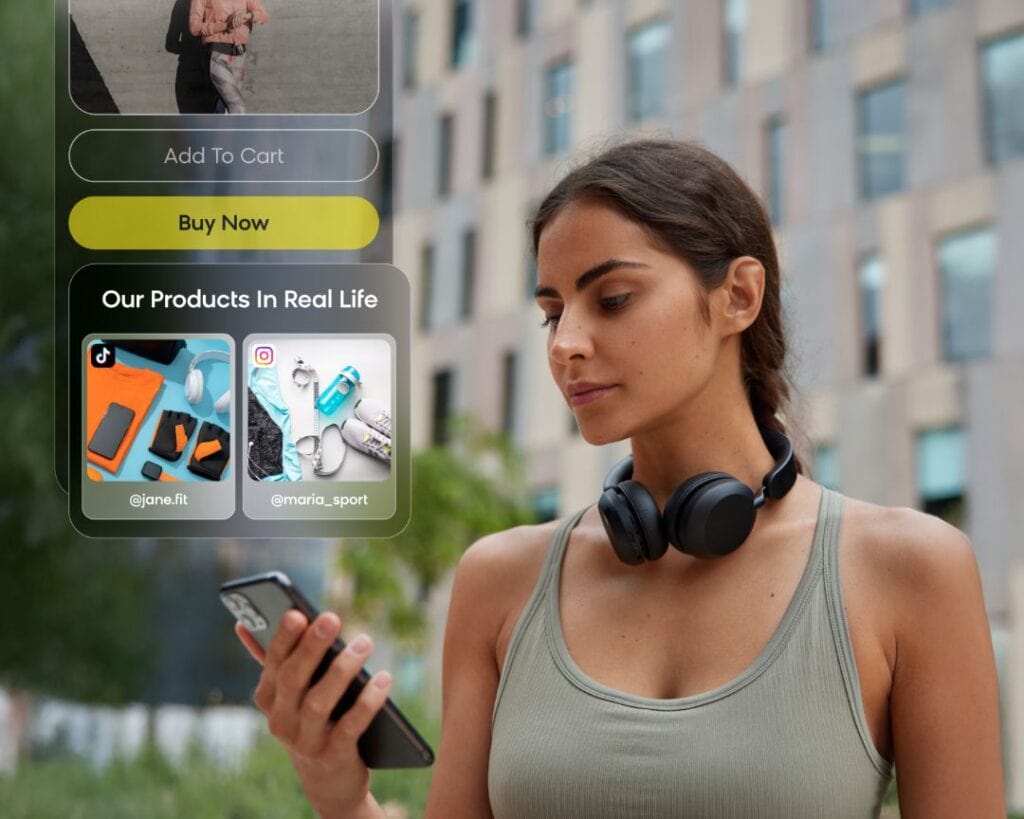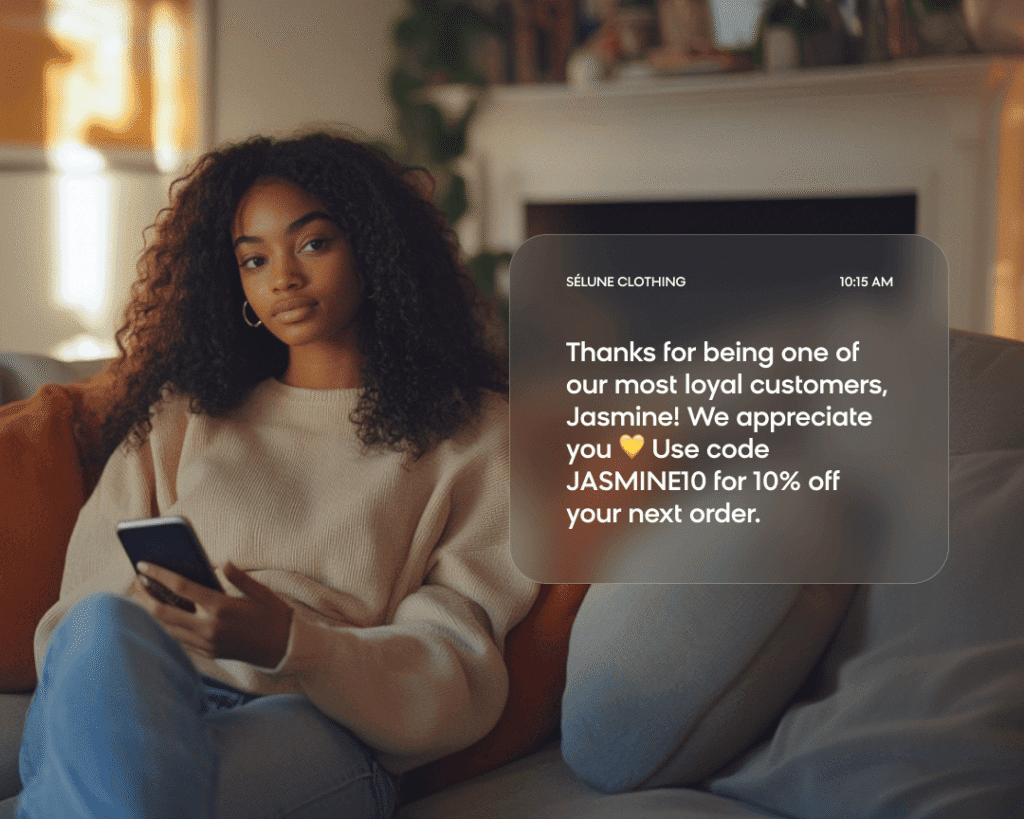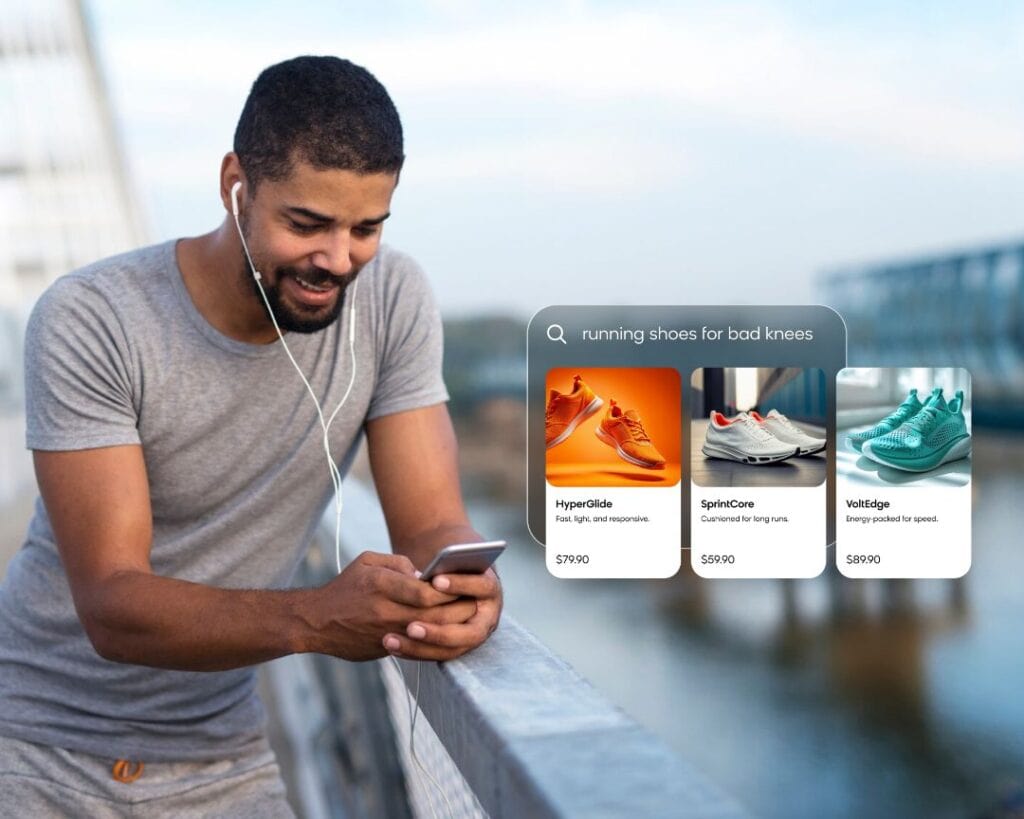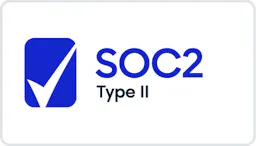ChatGPT has taken the ecommerce marketing world by storm and it’s easy to understand why.
Who isn’t in awe of AI that can generate a menu for Thanksgiving dinner or pass a college-level exam? And who doesn’t feel goosebumps when they hear of AI writing lyrics in the style of Nick Cave, much to the said singer-songwriter’s dismay?
But even in addition to ChatGPT, there are many powerful and practical use cases of AI emerging that can boost marketing success. AI is necessary to scale end-to-end personalization, for example.
When it comes to AI, we are really only touching the tip of the iceberg. AI will continue to disrupt and enhance the world of marketing in the years to come. What’s exciting is that any company, no matter the size, can take advantage of AI capabilities. It’s no longer confined to the world of large enterprises with massive data sets.
AI is impacting omnichannel marketing across the world. Keep reading to learn about a number of use cases, examples, and best practices for implementing AI into your omnichannel marketing strategy.
What Is Omnichannel Marketing?
To begin with, what exactly do we mean when we talk about omnichannel marketing? It may feel like an overused buzzword, but it’s also incredibly powerful.
Simply put, omnichannel marketing is a multichannel approach to marketing that’s focused on providing seamless customer experiences, whether the customer is shopping online (such as from a mobile device or laptop) or in a brick-and-mortar store.
It’s not the same thing as multichannel marketing, which means you’re selling to customers on multiple channels, both online and offline. Omnichannel marketing takes place on multiple channels, but it also connects all the channels so that your customers have a seamless experience across every touchpoint.
An omnichannel strategy focuses on the entire customer journey and not just the customer’s individual experiences on different channels.
The Role of AI in Omnichannel Marketing
In omnichannel marketing, AI plays a role in personalizing and optimizing the entire customer experience across multiple channels. It unifies and analyzes data about customers and products to inform marketing campaigns, predict channels customers are more likely to convert on, and automate repetitive tasks.
Omnichannel marketing automation powered by AI is what truly enables end-to-end personalization at scale.
There are different types of AI technologies, such as natural language generation, natural language processing (NLP), machine learning, computer vision, and so on. All of these play a role in supporting and enhancing different areas of the customer experience from personalizing recommendations to automated customer service and providing a smoother shopping experience.
The relationship between marketer and AI may be looked upon as somewhat symbiotic because the marketer tells the AI what to pay attention to, while they fine-tune experiments and test ideas. Meanwhile, AI leverages that data to run experiments, learns from a marketing user’s inputs, and ultimately determines what a customer wants.
Let’s explore some of the most popular AI use cases in omnichannel marketing today and how you can go about successfully implementing them.
Read this next: How To Get Started With Omnichannel Marketing Automation
Generative AI and Omnichannel Marketing
The recent advancements in generative AI will have an incredible impact on omnichannel marketing.
Generative AI works by using machine learning algorithms to create outputs based on raw data entered by human users. Generative AI models can include generative adversarial networks (GANs), diffusion models, and recurrent neural networks, among others. These models use large language models (LLMs) and natural language processing to generate unique outputs.
By automating content creation with generative AI, it frees up your marketing team to focus on creating an effective omnichannel marketing strategy. This strategy focuses less on specific channel marketing and considers the entire customer journey, leveraging multiple marketing channels to provide a seamless experience across online and offline channels. Using omnichannel AI helps to ensure consistent messaging and a unified brand experience across all channels, which is key to improving your marketing intelligence.
Omnichannel marketing software platforms offer marketing teams the ability to manage multiple platforms and channels from a single dashboard. This makes it easier to analyze customer data and create targeted marketing campaigns that resonate with the target audience. Additionally, marketing automation tools can be used to streamline workflows, allowing the team to focus on providing exceptional customer service.
One of the primary benefits of omnichannel marketing is the ability to provide a seamless customer experience across various marketing channels. This includes social media channels, email, chatbots, and more. With generative AI, marketers can automate their marketing campaigns to run across multiple channels. This ensures that the customer receives consistent messaging and a personalized experience, regardless of the marketing channel they interact with.
To ensure customer satisfaction, it’s essential to have a deep understanding of the buyer’s journey. Generative AI can help analyze customer data to identify patterns and trends in the customer journey. This information can be used to refine omnichannel marketing strategies and create targeted campaigns that speak directly to the customer’s needs.
Generative AI is an invaluable tool for modern marketers looking to implement effective omnichannel marketing strategies. By leveraging this technology, marketing teams can automate content creation, streamline workflows, and create targeted campaigns across multiple channels. The result is a seamless customer experience that meets or exceeds expectations at every stage of the buyer’s journey.
Agentic AI and Omnichannel Marketing
Agentic AI, or AI equipped with the power to make decisions autonomously, is dramatically reshaping how brands approach omnichannel marketing.
By analyzing data and acting on it in real time, agentic AI is helping businesses deliver smarter, better-coordinated customer interactions. This technology isn’t just about automating tasks; it’s about making your marketing strategy more dynamic and responsive, elevating the entire customer experience.
One of the biggest benefits of agentic AI lies in its ability to enable agentic personalization. Picture this: a customer browses your ecommerce site on their phone during their morning commute, and later that day, they receive a tailored email or ad on their preferred platform highlighting the exact items they were eyeing.
Agentic AI handles this seamlessly, tracking behavior, identifying preferences, and making adaptive decisions about when and where to engage. This personalized approach doesn’t just boost conversion rates; it builds brand loyalty by making every interaction feel relevant and meaningful.
Another game-changing advantage of agentic AI is its ability to unify channels. Omnichannel marketing relies on a cohesive strategy where various touchpoints — from apps to in-store experiences to social media ads — are harmoniously integrated. Agentic AI powers that cohesion by ensuring every channel speaks the same language, showing consistent messaging and smooth transitions for the customer.
Recommendations
AI-driven algorithms can be used to help you manage the product discovery experience you create for your customers. It does this by displaying personalized product recommendations. These recommendations allow customers to discover more products, resulting in more engagements, add-to-carts (ATC), and conversions.
You can power your pages with merchandising based on recommendation widgets that you can manage and control. There are different recommendation widget types that you can use, such as:
- Frequently bought together: Displays other products that are commonly bought together with a given product
- Frequently viewed together: Displays other products that are commonly viewed along with a given product
- Similar products: Displays other products that are similar to a given product
- Experience-driven recommendations: Displays highly targeted product recommendations by creating real-time user affinity profiles that use semantic understanding and site browsing behavior to understand user intent
- Bestseller: Displays products that are likely to generate the most revenue
- Past purchases: Displays previously purchased products to a logged-in customer to enable quick ATC for repeat purchases
- Trending products: Displays products based on the most popular or trending products for a given time period
- Recently viewed products: Displays personalized product recommendations based on the user’s past purchasing history, browsing behavior, and customer preferences
Best Practices for Using AI Recommendations in an Omnichannel Marketing Strategy
Here are some of the ways in which you can integrate AI recommendations into your marketing practices:
-
Automated welcome email series
These are a set of emails triggered by a customer action that signals interest in your brand (e.g., account sign-up or event registration). They are intended to be helpful and informative, and can help you build a personal relationship with your customer. With an automated welcome email series, you can go beyond sales-based messaging and use AI recommendations to show your audience helpful content that can guide them to a purchase decision.
-
SMS marketing campaigns
You can go beyond the realm of welcome emails and send a welcome text message featuring personalized offers, special deals, and event promotions. This can go a long way toward building customer trust and loyalty.
-
Increasing customer lifetime value with personalization
Use AI-based recommendations to recommend products and services that are based on a customer’s past behavior, resulting in improved engagement, conversions, and customer lifetime value (CLTV). The AI can also base recommendations on available inventory in real time.
Examples of Successful AI Recommendation Implementations
Here are some of the best examples of AI recommendations we’ve seen among our customers:
Woolworths
The supermarket brand uses a combination of Bloomreach Engagement and Bloomreach Content to deliver fast value and display relevant content on its app for users. Within three months of using Bloomreach, Woolworths was able to send over 200,000 personalized SMS, push, and email communications.
Benefit Cosmetics
The beauty brand chose Bloomreach to power its omnichannel marketing strategy by enabling the creation of personalized messaging for each target audience during a campaign promoting a new line of blushes. This resulted in 50% higher CTR and 40% more revenue from its Blush launch email compared to previous campaigns.
See more success stories of AI Recommendations in action.
Predictions
Wouldn’t it be great if you had a crystal ball to determine the likelihood of a customer purchasing in the future or what that next purchase might be? With AI-powered platforms like Bloomreach Engagement, advanced algorithms are used to create models and find connections between data and customer decisions. In this way, AI has the capability to analyze customer data and make predictions about future behavior. So instead of flying blind, marketers can leverage their vast amounts of data to identify patterns and anticipate future customer behaviors, sales trends, and marketing outcomes.
Predictions powered by software like Bloomreach Engagement offer you many business benefits, including:
- Insights into future customer behavior: Advanced machine learning algorithms can accurately predict a customer’s next actions
- Campaign efficiency optimization: Predictive insights help you achieve your chosen marketing goal by allowing you to target the right customers with the right campaigns
- Revenue optimization: Target customer audiences likely to generate the majority of your revenue
- Omnichannel utilization: The option to use predictions across different channels (includes weblayers, on-site personalization, and emails)
- Predictions-enriched customer profiles: Individual customer profiles filled with predictions data
- Easy-to-use predictions builder: The ability to build customized prediction models with minimal effort
- Predefined templates: A ready-to-use model for the most popular predictions
- Transparent model visualization: Easy-to-understand dashboards containing the data on which the predictions models are based
Best Practices for Using AI Predictions in an Omnichannel Marketing Strategy
Predictive marketing techniques enable you to optimize your omnichannel marketing and drive revenue.
Here are some of the types of AI-powered predictive analytics that you might find useful:
- Purchase prediction: Predicts the likelihood of a future purchase by a customer
- Open email prediction: Predicts if a customer will open a future email campaign
- Optimal send time: Predicts when a customer is most likely to open a campaign message
- Churn prediction: Predicts the likelihood of a customer churning
- In-session prediction: Predicts if a customer will fulfill a selected goal during a session
- Custom prediction: Predicts if a customer will match a custom target condition
For a more in-depth exploration of how these use cases work and their real-world applications, check out Bloomreach’s guide to predictive marketing.
How boohooMAN Uses Predictive Marketing in SMS Campaigns
Ecommerce fashion retailer boohooMAN wanted to generate more ROI from its SMS campaigns as part of its overall omnichannel marketing strategy. In the past, it ran SMS campaigns during one-off occasions like Black Friday. The SMS messages weren’t personalized and they were sent to an unsegmented customer base who were largely inactive customers.
boohooMAN decided to use Bloomreach Engagement’s winning combination of customer data platform (CDP) and predictive analytics to send SMS campaigns that meet customers where they are in the customer lifecycle.
For example, if a customer opted in for SMS and emails, but had only ever made purchases through SMS, Bloomreach Engagement’s predictions capability helped identify SMS as the next best action to help push customers into action with the brand.
The results included:
- 5x return on investment on SMS campaigns in the UK
- 25x return on investment on a birthday flow SMS campaign sent to customers who weren’t opted in for email marketing communications
Read the full boohooMAN case study.
Contextual Personalization
The go-to testing strategy for many companies is to A/B test. And while A/B testing generally works, that’s also the inherent problem — it’s general. You take a winning variant based on a control, and then apply that variant to the rest of your audience. Even though there’s a higher chance of that version resonating, there’s also a good chance it won’t click with a large number of your customers, which is a missed opportunity.
That’s where AI-driven contextual personalization can help. Instead of trying to find the best overall messaging to appeal to as many customers as possible, you can use contextual personalization to match the best customer to a particular message. The key difference here is that AI can use each customer’s context — things like clicks on the website, past purchases, opened emails, and even data from their ongoing session — to select the variant most likely to lead to a conversion.
Not only does this method help you realize greater conversions and revenue, but it also allows you to scale your testing strategy in a way that traditional A/B testing can’t match.
How bimago Uses Contextual Personalization To Boost Conversions by 44%
Interior design brand bimago wanted to deliver more personalized experiences, but found that A/B testing for conversion rate optimization was limited. Only one out of eight A/B tests drive significant change, which was too slow for bimago’s mission, and also meant the company would ignore the preferences of certain customer segments.
bimago decided to turn to Bloomreach Engagement’s contextual personalization to fill in the gap left by A/B testing and allow each individual customer to see a personalized variant. The feature automatically selects the best variant for each individual customer by combining the customer’s historical context (clicks, purchases, campaigns, customer properties, etc.) and in-session context (current session behavior, search parameters, etc.).
And the results speak for themselves. After implementing contextual personalization, bimago saw a 44% increase in conversion rate among customers who had the banner personalized to them vs. those who saw the A/B testing version.
Content Creation
Now for the really fun bit. AI-powered content generation is certainly getting a lot of attention lately thanks to the arrival of ChatGPT. It’s arguably viewed as the sexiest marketing use case and in the eyes of some, a mix of software and sorcery.
With copywriting, idea generation, market research, and search engine optimization among the mix of capabilities, ChatGPT has emerged as the most successful AI-powered chatbot ever released to the general public. While chatbots prior to the advent of ChatGPT might pale in comparison, AI tools in recent years have become good at some of the more narrow and well-defined tasks like writing marketing copy.
Bloomreach Integrates With GPT-3
Bloomreach Engagement already offers a wide variety of AI-based features to help our customers generate more revenue and scale their marketing activities. On our journey to provide our users with highly effective AI and machine learning solutions to drive revenue and growth, we’re excited to introduce an integration with OpenAI’s world-class GPT-3 language model, which ChatGPT is built on. This will allow users of our app to generate highly converting content easily with the help of their AI content assistant for quick and effective copywriting.
The benefits our customers will enjoy with this integration include:
- Content ideas generated in seconds: Our GPT-3 integration allows you to quickly execute, analyze, and adjust your content ideas.
- Fast and easy A/B testing: Have your A/B tests ready in seconds. For example, ask GPT-3 to generate 10 variants for a subject line you’re looking for, then create variants with your favorite suggestions.
- The ability to test different tones of voice: If you want to experiment with different-sounding styles, GPT-3 will help you find the best-sounding alternatives to your content.
- Jinja personalization: GPT-3 can incorporate Jinja fields to personalize copy with customer data.
- Natural multi-language content translation: GPT-3 can be used to create language variations of your content and supports 95 different languages.
Best Practices for Using AI Content Creation in an Omnichannel Marketing Strategy
Here are some ways you can use AI to generate content:
- Blog posts: Generate high-quality blog posts on various topics, saving time and effort for marketers
- Social posts: Generate social media posts that are optimized for specific platforms, engaging audiences with relevant and personalized content
- Email campaigns: Write personalized email campaigns, resulting in increased open and click-through rates
- Chatbots: Create conversational chatbots for customer service and support, providing quick and efficient responses to customer queries
- Video scripts: Generate video scripts, enabling marketers to create high-quality video content with less effort
- Product descriptions: Write compelling product descriptions for ecommerce websites, optimizing them for search engines and improving the customer experience
- Personalized recommendations: Provide personalized product or content recommendations for customers, increasing conversions and improving the overall customer experience
Tap Into Agentic AI Capabilities With Bloomreach
The future outlook for the use of AI in omnichannel marketing looks very promising. AI is revolutionizing marketing by providing innovative ways to engage customers — personalized recommendations, predictions of customer behavior, and automated content generation, to name but a few.
Looking ahead, agentic AI has the potential to completely redefine the boundaries of omnichannel marketing. The ability to automate decisions at such a granular level ensures that marketing strategies will continue to evolve, becoming more dynamic, efficient, and customer-centric. The brands that tap into this potential today are the ones that will lead the charge tomorrow.
The future of marketing and commerce will be powered by autonomous search, autonomous marketing, and conversational shopping capabilities. Bloomreach, the platform for agentic personalization, is breaking the limits of traditional AI and helping customers to win with AI-powered personalization.
Learn more about the agentic future that Bloomreach is building and future-proof your marketing today.



